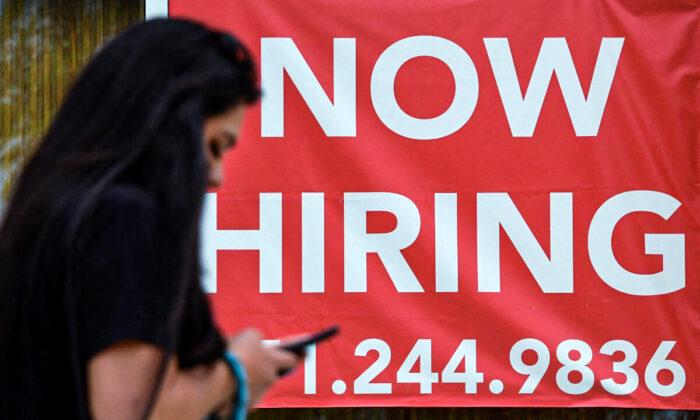Lockdowns and quarantines in 2020 had a disproportionate impact on women. Though some saw bias, the main problem was that services suffered most in that environment, and women dominate employment in this area.
Now, the post-pandemic recovery has disproportionately benefited services and presumably women’s employment prospects, but many who had worked before the pandemic seem uninterested in the unfolding opportunities. These women have remained outside the workforce, neither working nor seeking paid positions. Their decision seems to reflect a rather subtle calculation, but whatever their reasons, the pattern is worrisome—because the longer a person remains outside the workforce, the more difficulty she will have securing a job should she need one.
Certainly, today’s labor market offers plenty of job options. Stories of labor shortages, especially in services, crowd the headlines. A walk down any main street in the country reveals a plethora of “Help Wanted” signs. Still, many women have simply made the decision to pass on paid work.
According to the Labor Department, fully 1.5 million women who were employed in February 2020 have not only failed to go back to their former jobs, but they’re no longer even seeking work. The picture is troubling and contributes to income inequality, because most of the women who have dropped out of the workforce come from the lower end of the income distribution.
For a while, the reason for the shortfall in work participation lay with the extra unemployment payments offered in the two COVID relief bills. These extra payouts affected both men’s and women’s decisions, but especially women’s. Since women typically bear the bulk of child care responsibilities, the generous unemployment check not only helped them meet household expenses, but also saved the child care costs these women would have incurred by returning to work. Whatever explanatory power these extra payouts had, they ended last September and so can no longer explain the persistence of women’s reduced rates of workforce participation.
An upbeat explanation for this phenomenon might lie with the improved job and income prospects of the partners of those who have opted out. Much academic and Labor Department research on work decisions shows that the better the job and income prospects for one member in a couple, the more likely the other member is to give up paid work altogether, at least for a time. Well-documented as this kind of behavior is, it can do only a little to explain what’s happening today. After all, job and income prospects for partners were very good before the pandemic and women still participated in paid work at a greater rate than they do now.
Two other less upbeat explanations seem to have greater explanatory power. One is inflation. Though wages have risen and would otherwise tempt both women and men back to work, so has inflation, including the cost of child care, leaving the real return to work considerably less attractive than it might otherwise seem. At the same time, several states and even the federal government have considered the elimination of contingent work. Though most such rules seek to secure more benefits for workers, they also eliminate the kinds of flexible hours that enable people to make tradeoffs between work and other responsibilities, especially child care. By limiting this flexibility, such regulations make paid employment still less appealing, especially for women at the lower end of the income distribution.
Labor Department figures certainly point to these combined effects. They show that mothers of young children who have just a high school diploma have been most likely to drop out of the workforce. This group’s work participation rate has fallen almost 8 full percentage points since the pandemic began. Though this group amounts to only some 12.5 percent of all working women, it constitutes almost one-third of the entire number who have decided against paid work.
Perhaps the inflation will lift, as Federal Reserve Chairman Jerome Powell and others in authority have forecast. Should that occur, a continued rise in wages would draw women back into the labor force. If, as is likely, that happy event fails to occur or fails to inspire women’s greater participation, matters could impose a lifetime burden on those opting out—for long periods without work on a person’s record give employers pause when deciding to offer a job. Compounding the potential problem is the fact that the longer people stay out of work, the more their skills lose applicability.





